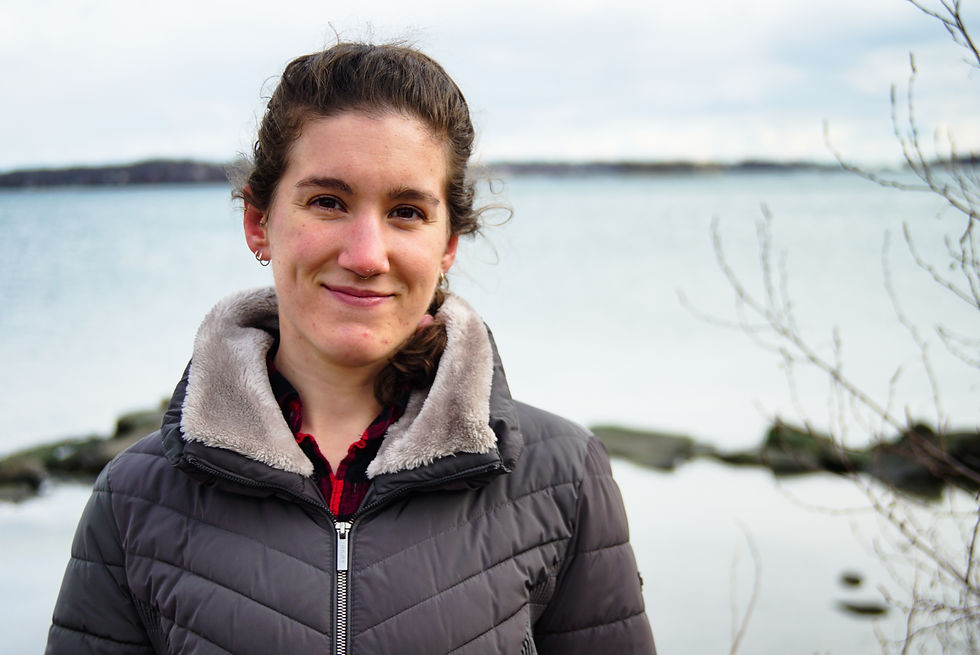Building Resilience from the Air, Down
- Maria Guerra

- Feb 26, 2021
- 3 min read
Updated: Mar 8, 2021
Maria Guerra, Environmental Health Fellow, explains how she is helping to build resilient and environmentally conscious communities here in Maine.
Since day one, explaining what I’ve been up to as an AmeriCorps volunteer has proven to be a clumsy process, starting with “I am an AmeriCorps volunteer”, and continuing with “…who is assigned to work with the Maine Department of Environmental Protection (DEP), Bureau of Air Quality, through the Greater Portland Council of Governments, as a Resilience Corps Fellow (or the Environmental Health Fellow), with the intent of bolstering the effort in a volunteer-based air sampling program that is in response to the City of South Portland’s concerns about air quality.”
In the spring of 2019, the City of South Portland expressed concern over the quality of air, in connection to the proximity of petroleum storage tanks. With the help of the Maine DEP, a project was put into motion to assess the safety of the air that the community breaths.
Fast forward to November of 2020, I started my position by recruiting volunteers in the Portland and South Portland area interested in allowing the Maine DEP to place an air sampler in their yard for 2- 4 weeks at a time. When people hear the words “air sampler”, our 2 ft x 1.5 ft x 1 ft white box with pipes extending beyond the top like cartoonish insect antennae, might not be the first image that comes to mind, but that’s exactly what it is.
As I’ve spent more time in my role, the technological component of my job description has become a little more involved; but I think I can now provide an introduction to the inner workings of this sampler:

Inside our white box is a bulbous metal can attached to a valve, ultimately connected to one of the pipes extending above the box, and is controlled by a timer. One of my regular tasks, after placing this contraption in a volunteer’s yard, is to set this timer to one of the pre-
determined days on which a pump allows air to enter the can over the course of 24 hours. At the end of the 24-hour period, we have our VOCs (Volatile Organic Compounds) sample. In the same timeframe, another type of sample is being taken, and this one is collected outside the box, at the very end of the second exterior pipe. The PAHs (Polycyclic Aromatic Hydrocarbons) sample is collected with a tiny filter directly exposed to the air when the pump turns on. The next time that I visit the site, I remove both the can and the filter (which exists at the end of a small tube screwed into the external pipe) and replace them in time for the next round of samples. These samples are sent up to the lab in Augusta, where they are assessed, and their contents are then reported.
Collecting this data, in combination with that of the stationary sites in the greater Portland area, is a fundamental step in making informed decisions to ensure the air is safe to breath. Maintaining a healthy environment in urban areas is a complicated process, but ultimately ensures a high quality of life, and sustainable productivity for generations. This project not only allows a visual representation of unobservable components in the air, but by having residents lead the way in this effort, it is an opportunity to foster community engagement and build communication between decision makers at the state and municipal level.
So regardless of how tricky it might be to tell someone what I do for “work”, I am happy to know I am a part of supporting resilient and environmentally conscious communities here in Maine.
About Maria Guerra
Maria is from Falmouth, Maine, where developed appreciation for the natural resources at hand. She graduated in 2018 from the University of Southern Maine with a bachelor’s degree in Environmental Sciences. While in school, she was an intern with a local land trust that provided hands-on experience in monitoring the effects of land usage on the Presumpscot River. She also learned the importance of volunteer organization in the work of resource conservation. After graduation, Maria was an intern with the Maine Department of Transportation and developed an interest in the impacts of infrastructure on water quality and the connectivity of natural habitats. As a member of the Resilience Corps, she is excited to work with the community she has grown up with and expand her knowledge on current issues Maine people face concerning the quality of the natural environment. Maria looks forward to applying her background in the natural sciences to the Resilience Corps, as well as building upon her experience in community engagement.





Comments